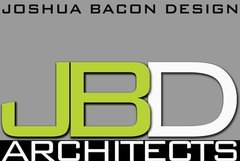Christopher Polly Architect

Christopher Polly Architect is an ideas-focused architecture practice established in Sydney in late 2005. The practice distils a holistic process-led approach in the delivery of creative and pragmatic architectural solutions that resonate simplicity, conceptual rigour and material invention. A strong emphasis is placed on a critical synthesis of the opportunities and constraints of each site, context and client brief as a catalyst for design differentiation and uniquely appropriate outcomes in response to place, landscape, sustainability and patterns of use. Our process results in high quality crafted outcomes that are meticulously detailed and finished.
Driving directions to Christopher Polly Architect on map
Christopher Polly Architect on Google Maps
Projects:
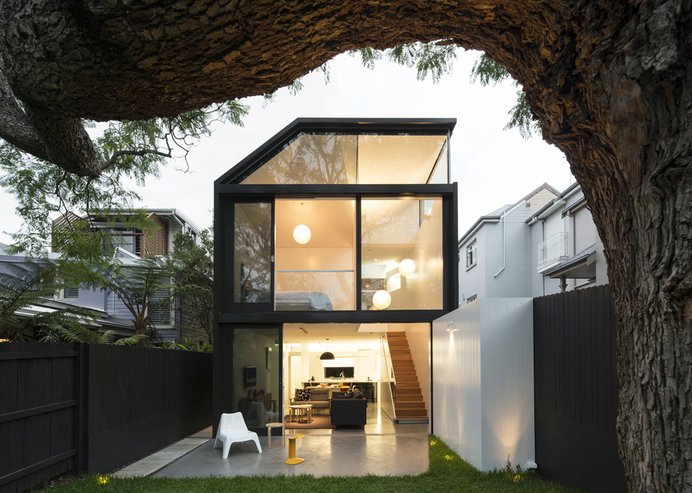
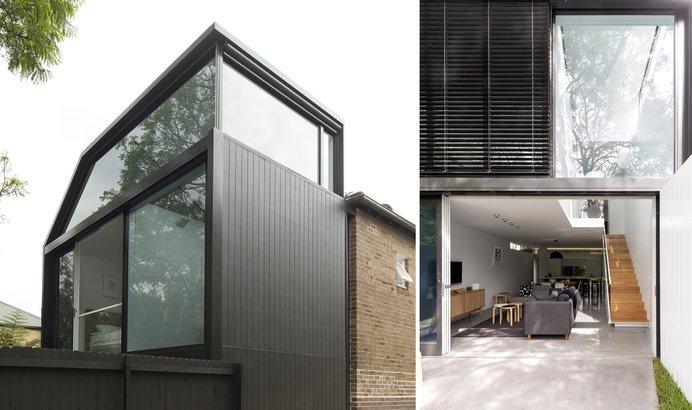
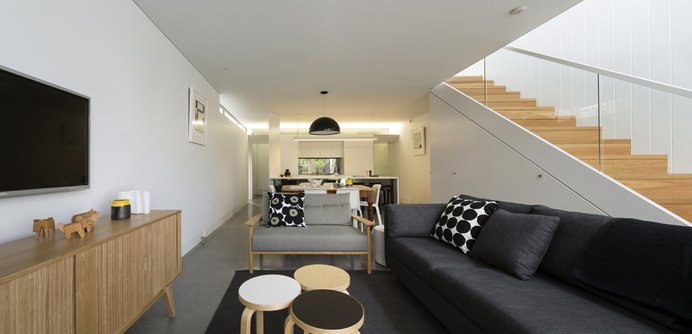
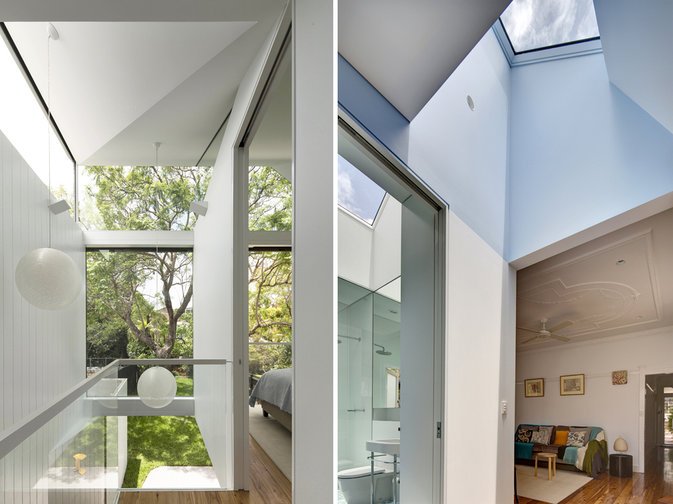
Cosgriff House
Annandale, Sydney, 2013
A substantial lower ground room is inserted under the original fabric, harnessing the fall in the site towards the rear. It extends deeply beneath the existing dwelling and outwards towards the garden to transform the original dwelling in combination with a re-modeled rear ground floor above. Both levels accept a modestly-sized lightweight addition which extrapolates existing wall alignments, gutter levels, enclosing wall heights and a southern roof plane – that at once, extends and subverts existing geometries to present an interpreted mirrored slice of the original vernacular form attached to the retained rear fabric. Vaulted ceilings and skylights carved within the original roof form expand volumes for access to light and sky within the middle of the ground floor – while a stair hall, cantilevered balcony and generous void spatially expands to the lower level below, and upwards to views of the external environment to strengthen connections to its setting.
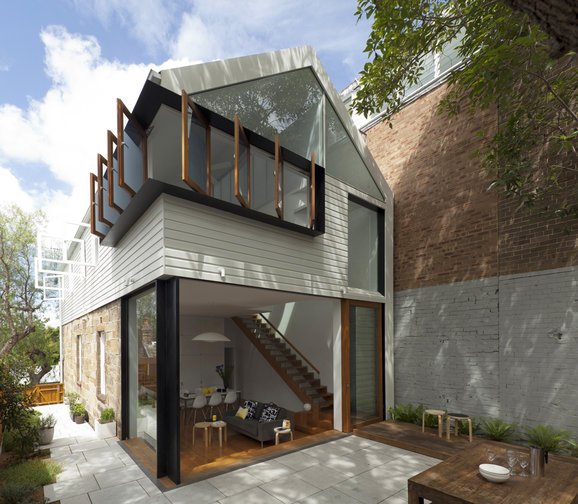
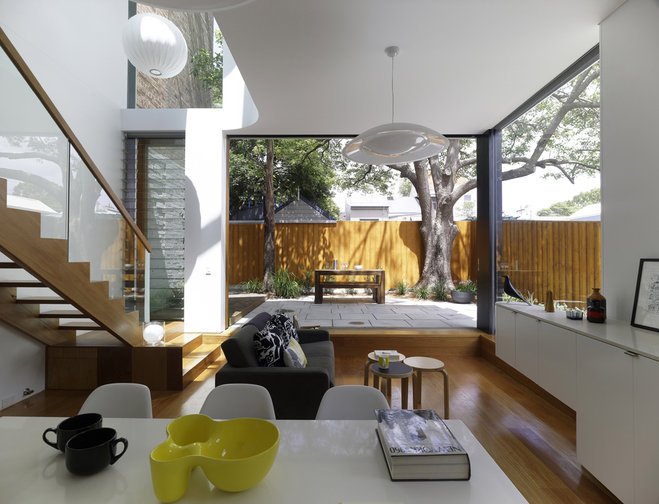
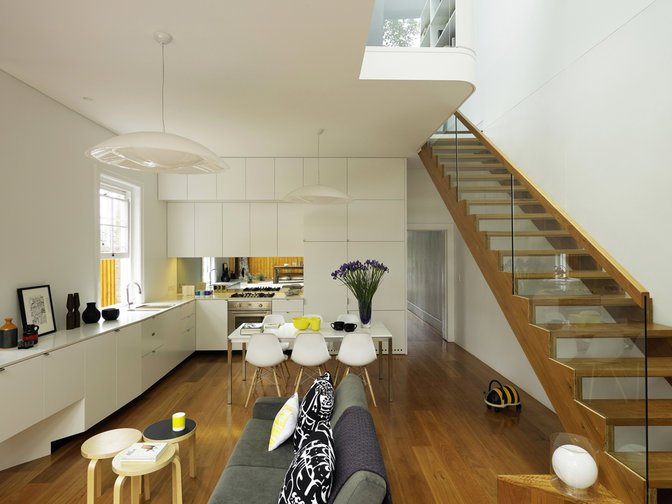
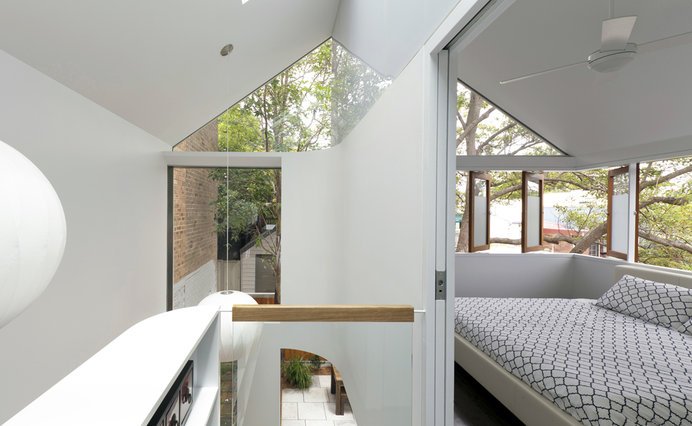
Elliott Ripper House
Rozelle, Sydney, 2011
The project is an appropriately simple and direct extrapolation of an existing archetypal form within a sustainably modest footprint. It provides an expanded series of connected interior spaces that harness access to sunlight, ventilation and strengthened links to trees and sky, with extension of key existing materials to retain some memory of its previous incarnation. A new ground floor open living volume is generated by extension of the original envelope & internal levels to an averaged plan footprint of former lean-tos, followed by a rear first floor addition that extrudes the previous floor plate and gable-ended roof form over the new ground floor. An extrapolated ceiling-to-wall junction within the new first floor rooms scribes the wrapped alignment of all element heights, lightly bridged to raked ceilings by opalescent polycarbonate – while a generous carved void and open stair vertically expands the relationship between two previously unrelated floors.
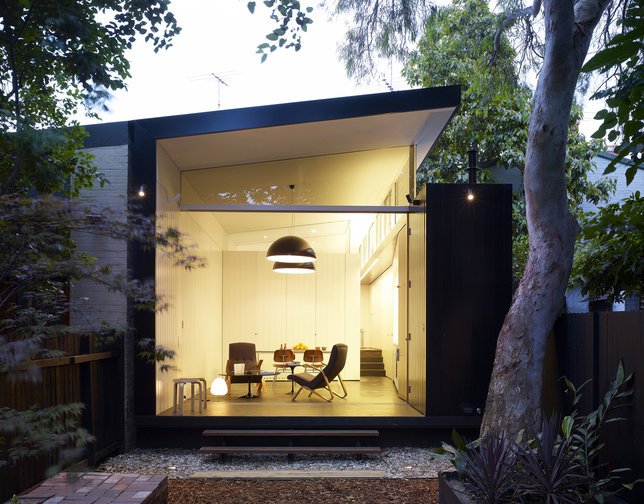
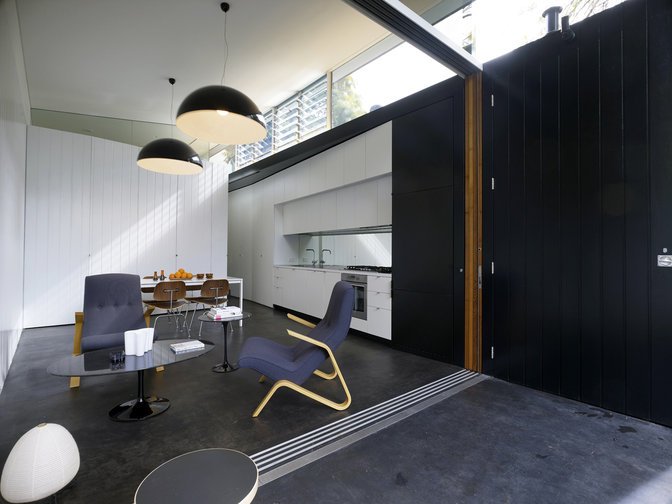
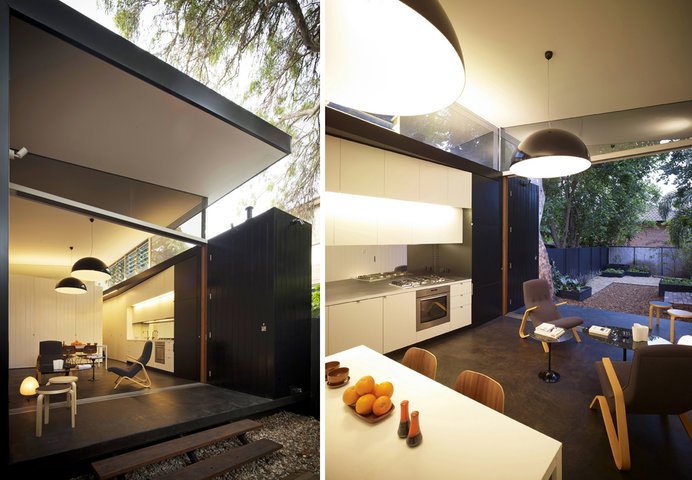
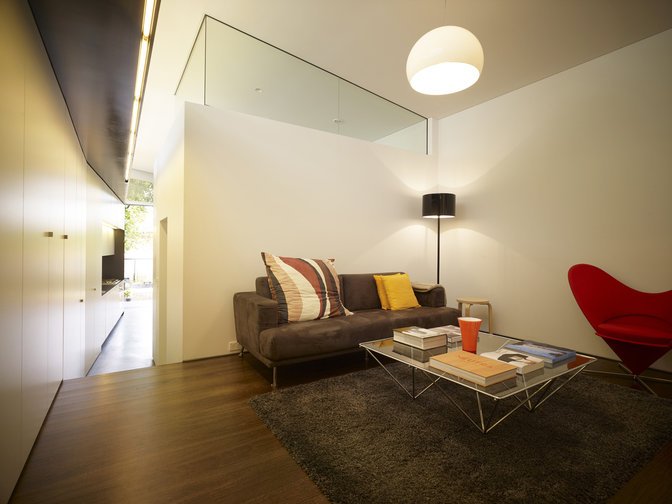
Haines House
Newtown, Sydney, 2010
The proposal provides a model for grafting a singular substantial volume to an existing single storey semi-detached dwelling while capturing a centrally retained bathroom within the new volume, enabling old and new fabric to enmesh a unique spatial sequence along the length of the dwelling. A response to place involved extrapolating the rear roof plane of the immediate adjoined dwelling, extruding this to the rear alignment of this adjoined dwelling, followed by extension of an existing low roof level along the unadjoined edge to the new rear footprint. The retention of the original front dwelling and existing bathroom enabled old and new fabric to stitch an alternating sequence of compression and expansion, enfolding a series rooms from the narrow hall and cellular 3-room layout, to open release in a new Living room, followed by a compressed scale shift and downward level change into the heightened rear openness of a Dining, Kitchen and second Living space.



